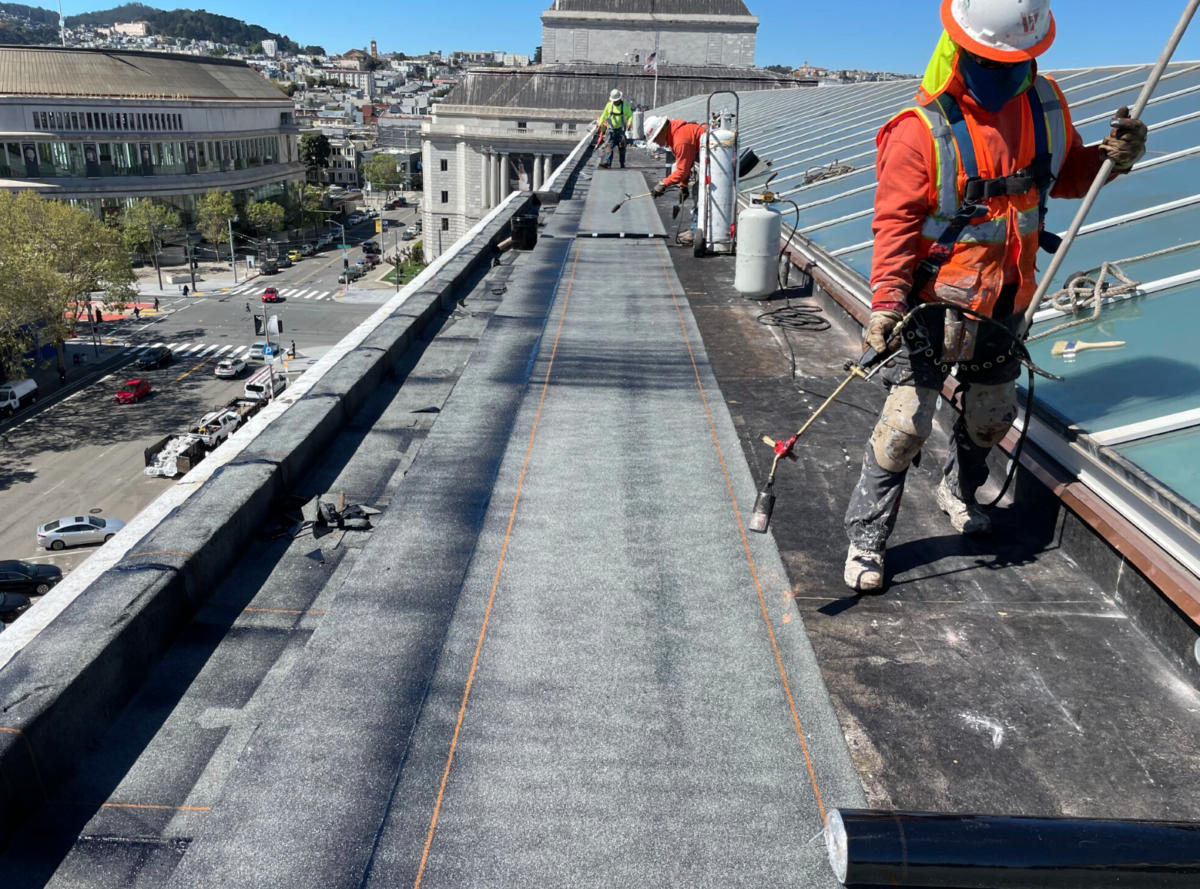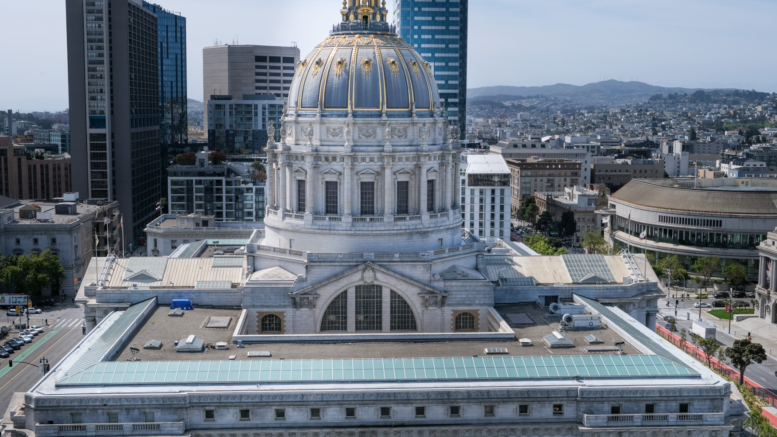San Francisco City Hall was constructed in 1915 as the seat of government for the city and county of San Francisco. Over the years, the building has transcended its original bureaucratic usage, becoming known as “The People’s Palace.” Today, San Francisco City Hall hosts hundreds of events each year, including weddings, galas, dinners, and all manner of celebrations.
So, when it came time for a large-scale roofing project, the facilities team at San Francisco City Hall knew they had more than the governmental employees to consider. The site’s schedule was full of celebrations that had already been postponed due to the COVID-19 pandemic, and the project could not disrupt planned events. Care had to also be taken to preserve and enhance the historic building’s famous aesthetics.
Garland reps Jay Mulligan and Tom Wooten worked closely with architects and engineering groups at the City’s Department of Public Works (DPW) to design a system that met all of their needs. Mulligan and Wooten recommended a polyester-reinforced LiquiTec fluid-applied system on top of one layer of torch-applied HPR base sheet.
Numerous Challenges
The existing gravel-surface built-up roof (BUR) at City Hall was failing, and additional vulnerabilities were cropping up around aging skylights. A full tear-off and replacement was needed at the hatch level roof below the structure’s iconic dome and in the perimeter roof area.

The project would be very difficult for several reasons. The DPW did not want to disrupt planned events, the photo opportunities associated with those events, or the general day-to-day operations of the building. The DPW also wanted to minimize any adverse impact on the environment.
“The Department of Public Works has an incredible level of environmental consciousness that considers all of the impacts that a project can have, both short-term, like the odor that can be cause by a solvent-based coating, and long-term, such as the reduction or elimination of waste that would go to a landfill,” Wooten says. “LiquiTec delivers on both counts.”
Ideal Solution
The system was installed by Western Roofing Service, a Tecta America Company headquartered in San Leandro, California. The water-based, low-VOC LiquiTec system did not create any smells or other disruptions that disturbed ongoing weddings or other events.
The system also provides great aesthetics. The monolithic finish of the LiquiTec system created a visually appealing look for the three roof areas, which are visible from surrounding skyscrapers. The highly reflective coating is also expected to reduce cooling needs within the building. The Garland system will extend the life of the roof an estimated 10-15 years, at which time the surface can be reactivated and resurfaced again, with minimal disruption and waste.
“The success of this project showcases our ability to deliver a roof system tailored to fit a building owner’s objectives,” says Wooten.
“Playing our part to preserve the architectural character of San Francisco is a responsibility we take very seriously,” Mulligan notes. “Garland was thrilled to be selected as DPW’s roofing partner for this project, and as a company that’s been around since 1895 ourselves, we look forward to supporting The People’s Palace into its next hundred-plus years.”
TEAM
Architect: Bureau of Architecture, San Francisco Public Works, San Francisco, California, sfpublicworks.org
Roofing Contractor: Western Roofing Service, a Tecta America Company, San Leandro, California, tectaamerica.com
MATERIALS
Membrane: LiquiTec Low-Odor Fluid-Applied Membrane, The Garland Company, Inc., garlandco.com
Base Sheet: HPR Torch Base Sheet,The Garland Company, Inc.


Be the first to comment on "Reroofing Project at San Francisco City Hall Minimizes Disruption"